Abstract
Among microfilaria (mf) carriers of subperiodic bancroftian filariasis in Samoa, the low-density level of microfilaraemia was defined as 1-20 mf/ml, and the occurrence of low-density carriers (90 in the present study) was analysed by age, sex, and village in relation to the microfilarial prevalence rate. The low-density carriers were more numerous among those under 20 years and over 60 years old than in other age groups. The ratio of low-density carriers to the total of mf-positive subjects in a village decreased as the prevalence rate of Wuchereria bancrofti in the village increased.
The epidemiological significance of low-density carriers was assessed in connection with the infectivity of vector mosquitos (Aedes polynesiensis) produced by them, the possible change of these carriers to carriers of a higher density, and the production of new low-density carriers by diethylcarbamazine citrate (DEC-C) treatment. The mosquito infectivity produced by the low-density carriers accounted for only 2.16% of the total infectivity produced by all the carriers, suggesting that these carriers are of minor importance in the transmission of filariasis. The change of microfilarial count over time among untreated mf-positive subjects was not remarkable during a 60-252-day observation period. However, the low-density carrier group showed a mean increase of 36%, the younger such carriers (under 30 years old) showing a 132% increase. The production of low-density carriers by DEC-C single-dose treatment (6 mg/kg body weight) was not as great as expected.
Full text
PDF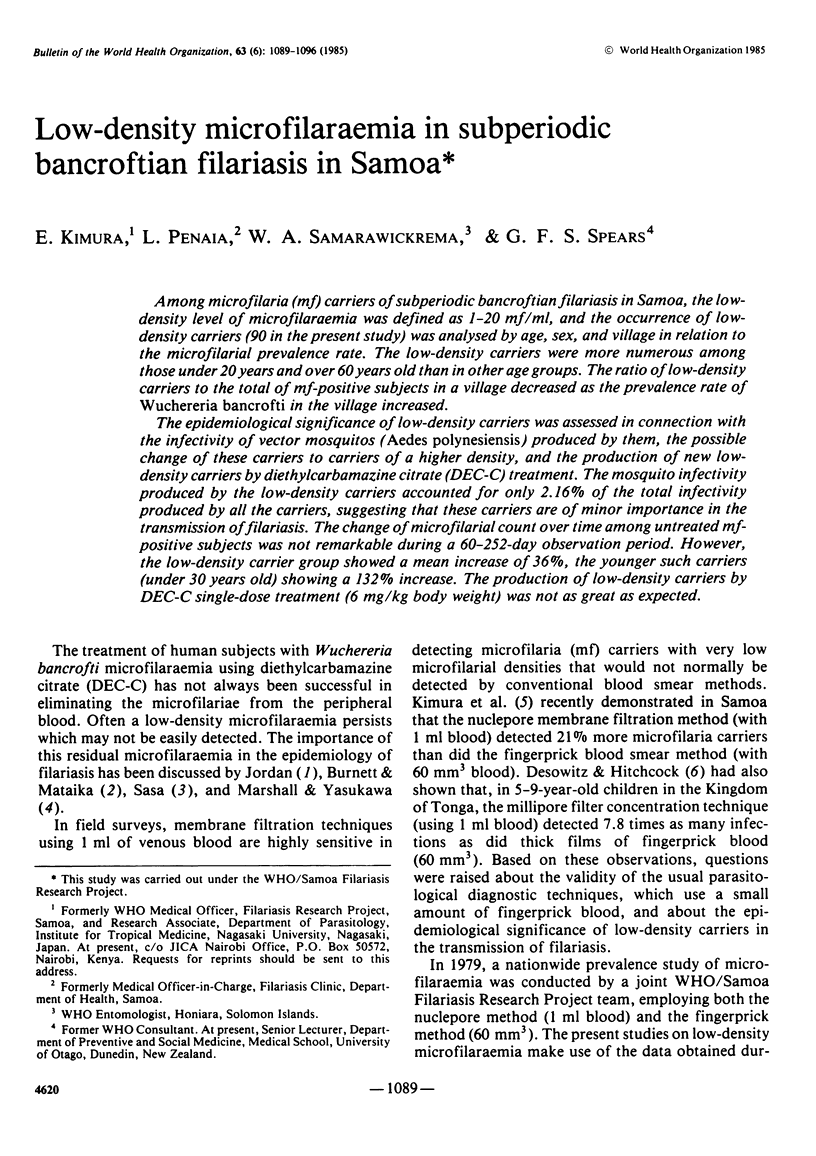
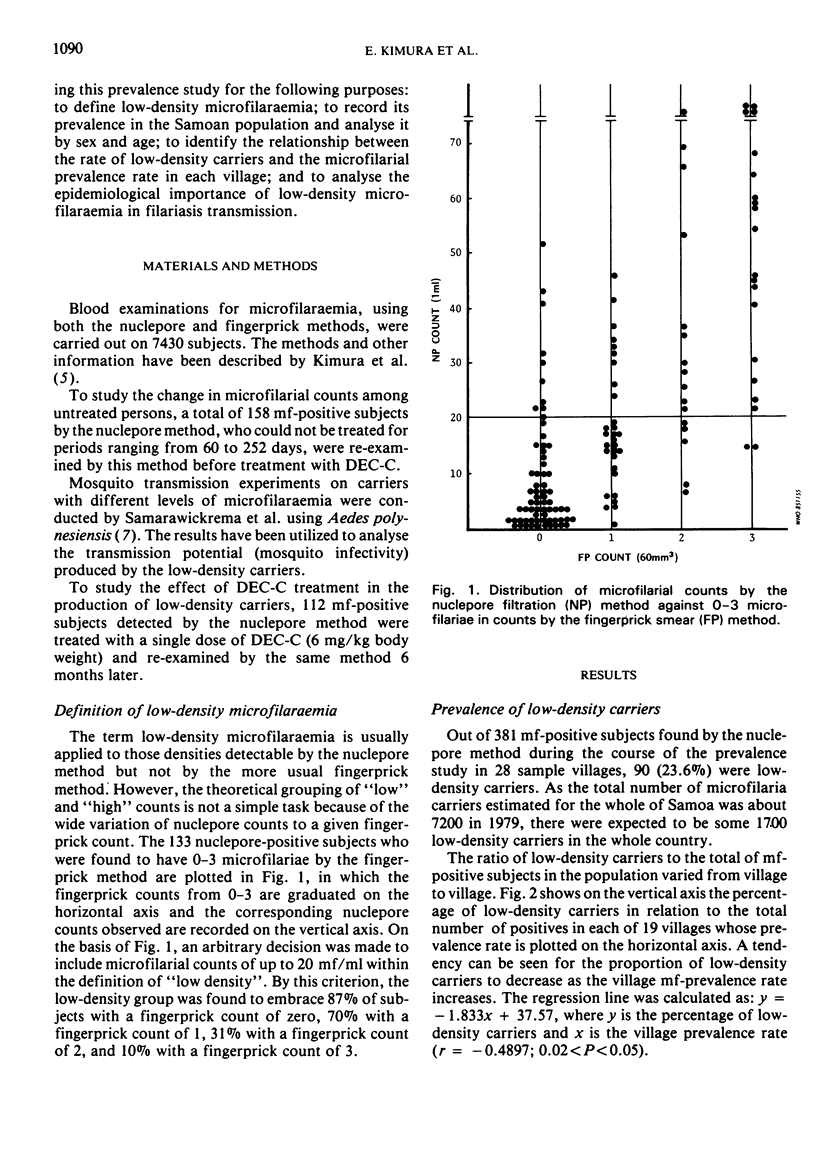
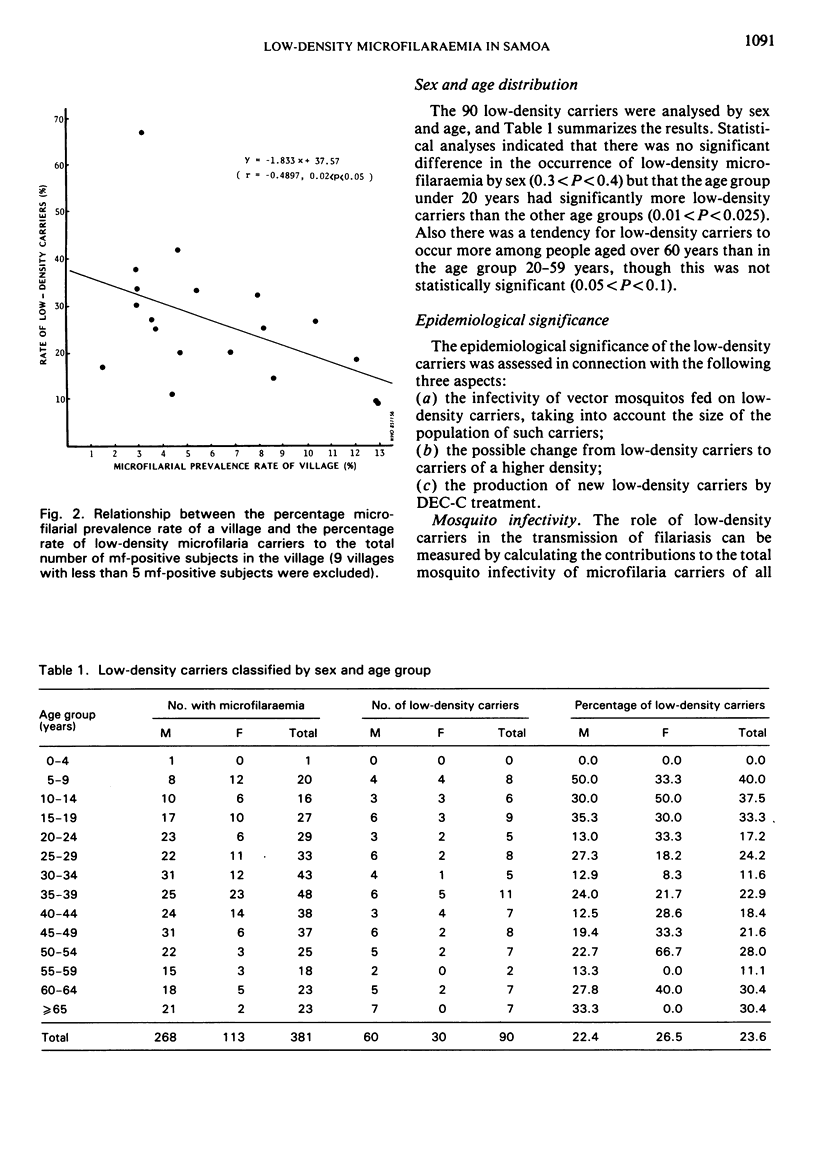
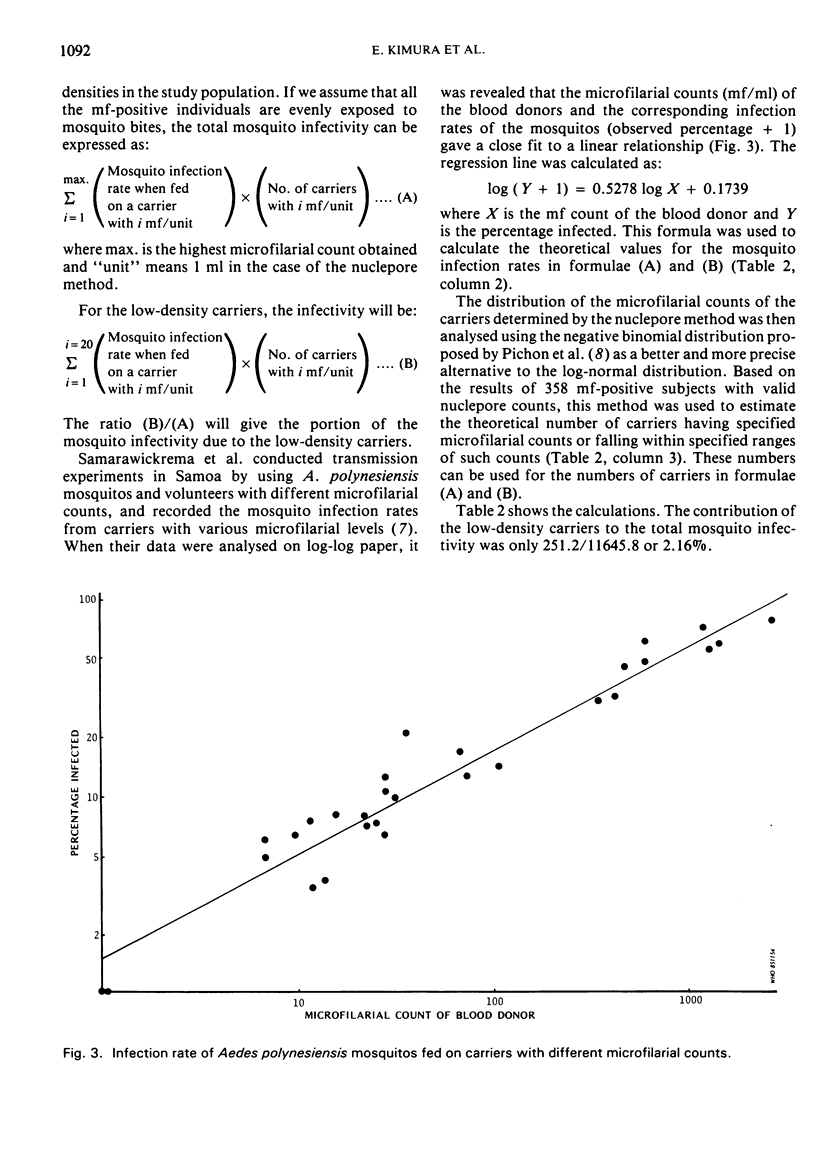
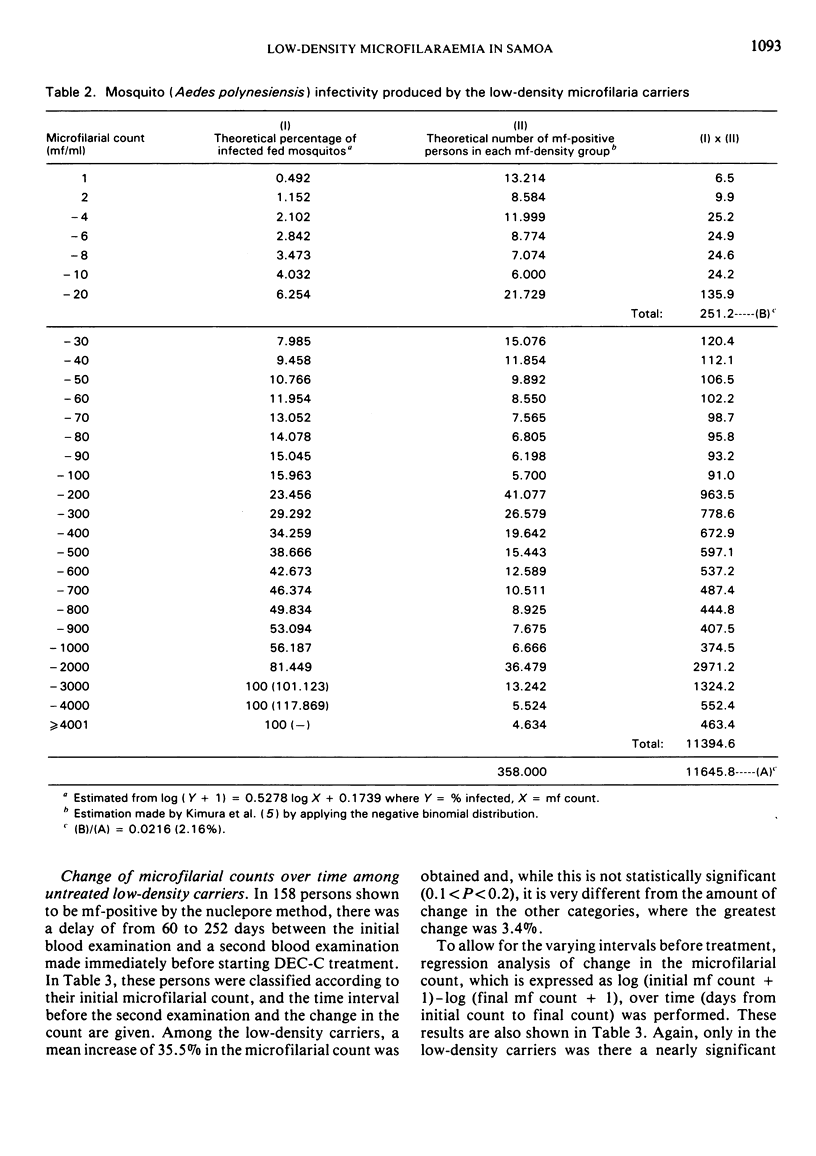
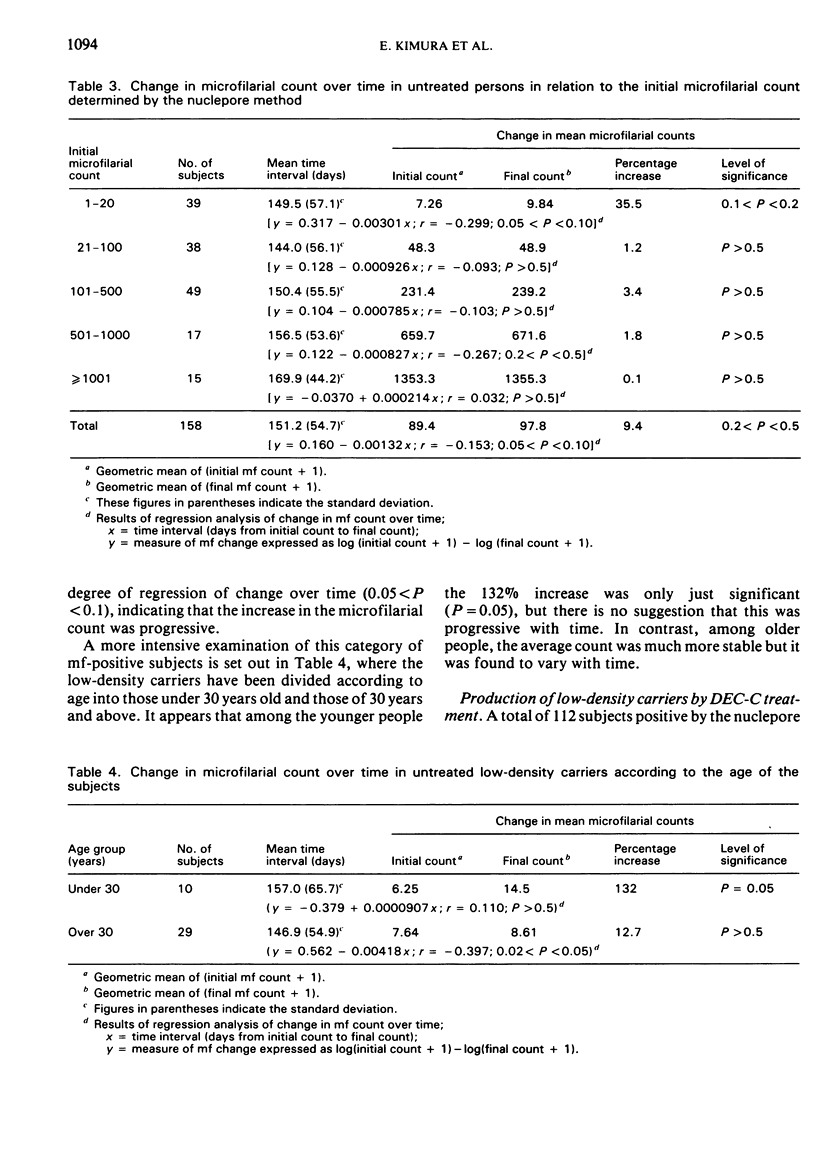
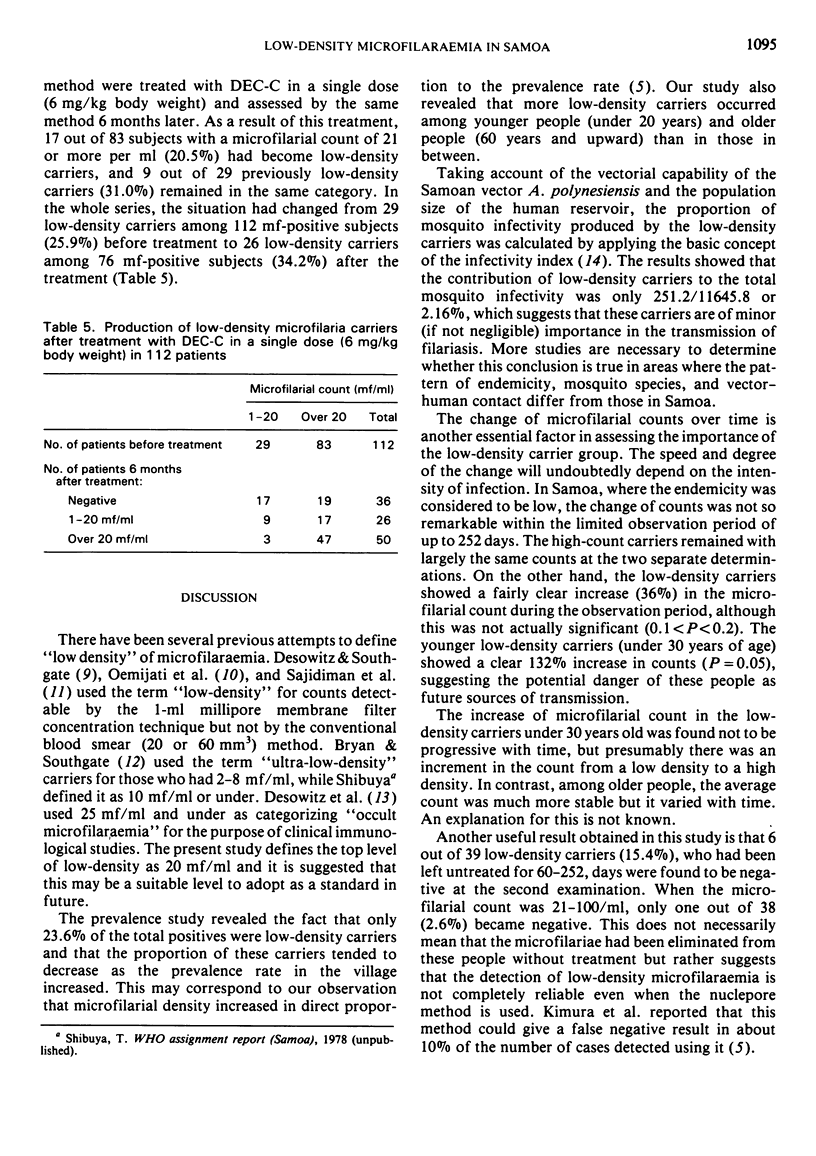
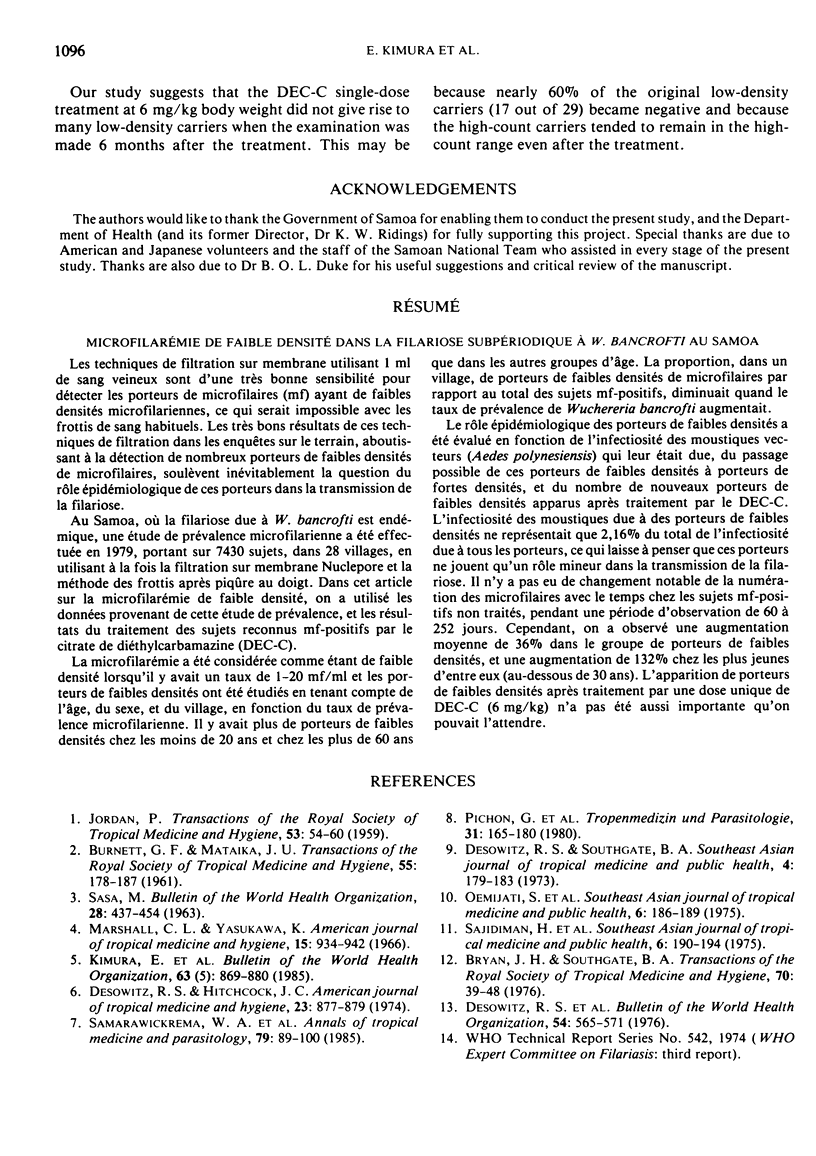
Selected References
These references are in PubMed. This may not be the complete list of references from this article.
- Desowitz R. S., Berman S. J., Puloka T. Hyperendemic subperiodic Bancroftian filariasis: a search for clinical and immunological correlates of microfilaraemia. Bull World Health Organ. 1976;54(5):565–571. [PMC free article] [PubMed] [Google Scholar]
- Desowitz R. S., Hitchcock J. C. Hyperendemic bancroftian filariasis in the Kingdom of Tonga: the application of the membrane filter concentration technique to an age-stratified blood survey. Am J Trop Med Hyg. 1974 Sep;23(5):877–879. doi: 10.4269/ajtmh.1974.23.877. [DOI] [PubMed] [Google Scholar]
- Desowitz R. S., Southgate B. A. Studies of filariasis in the Pacific. 2. The persistence of microfilaraemia in diethylcarbamazine treated populations of Fiji and Western Samoa: diagnostic application of the membrane-filtration technique. Southeast Asian J Trop Med Public Health. 1973 Jun;4(2):179–183. [PubMed] [Google Scholar]
- Kimura E., Penaia L., Spears G. F. Epidemiology of subperiodic bancroftian filariasis in Samoa 8 years after control by mass treatment with diethylcarbamazine. Bull World Health Organ. 1985;63(5):869–880. [PMC free article] [PubMed] [Google Scholar]
- Marshall C. L., Yasukawa K. Control of bancroftian filariasis in the Ryukyu Islands: preliminary results of mass administration of diethylcarbamazine. Am J Trop Med Hyg. 1966 Nov;15(6):934–942. doi: 10.4269/ajtmh.1966.15.934. [DOI] [PubMed] [Google Scholar]
- Oemijati S., Desowitz R. S., Partono F., Pant C. P., Mechfudin H., Sajidiman H. Studies on filariasis in the Pacific. 4. The application of the membrane filter concentration technique to a survey of Wuchereria bancrofti filariasis in Kepu district, Jakarta, Indonesia. Southeast Asian J Trop Med Public Health. 1975 Jun;6(2):186–189. [PubMed] [Google Scholar]
- Sajidiman H., Desowitz R. S., Darwis F. Studies on filariasis in the Pacific. 5. Brugia malayi filariasis in treated and untreated populations of South Borneo. Southeast Asian J Trop Med Public Health. 1975 Jun;6(2):190–194. [PubMed] [Google Scholar]


